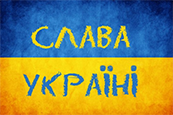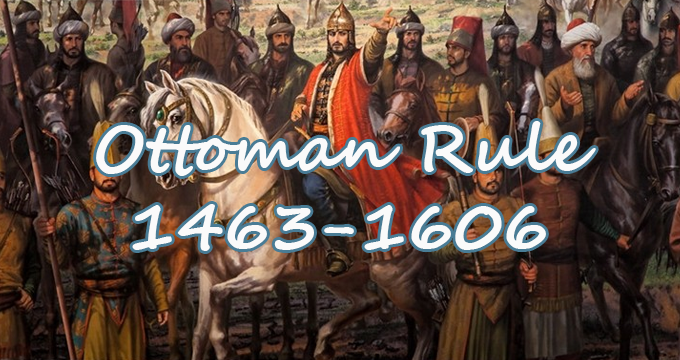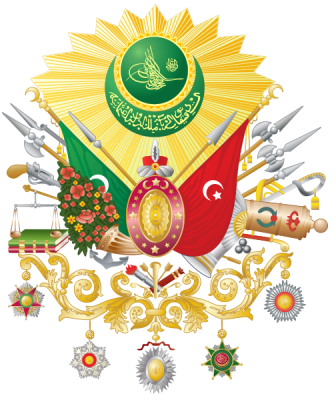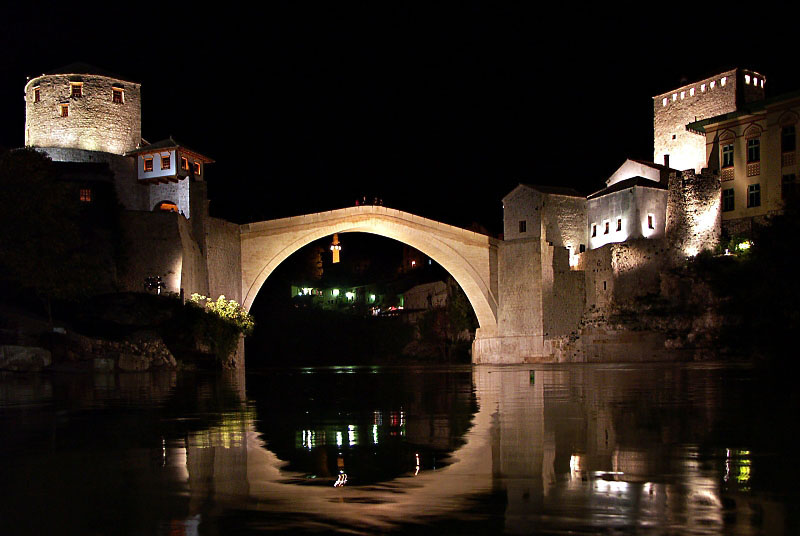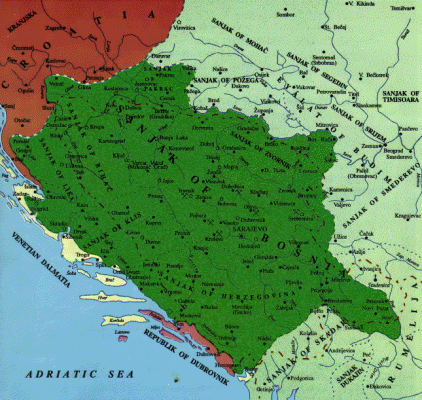The Kingdom of Bosnia was conquered with great speed by the Turkish army in the early summer of 1463. From then on the heart lands of the old Banate of Bosnia, together with the foothold which the Turks had already
established in the Sarajevo region, remain under permanent Turkish control, though the Turks withdrew their main military force in the autumn. But the gain which the Turks army had made in the northern half of Bosnia were quickly overturned by King Matthias of Hungary. The reason for this is found in the Serb-born janissary autobiography in which he explains that only eighty men were left behind to hold the fortress of Zvečaj, near Jajce; as soon as the Sultan had gone, both Zvečaj and Jajce were besieged by Hungarian troops, and they eventually surrendered [1]. King Matthias established a new Hungarian-ruled ‘banate’ of Bosnia in these northern territories, and in 1471 he promoted the Ban to the title of ‘King of Bosnia’. Although the area of the ‘kingdom’ was quickly whittled down by the Turkish campaigns, the rump which survived held out for more than eighty years. By the 1520s, however, the city of Jajce was under almost permanent siege, receiving deliveries of food from Hungarian Slavonia by armed convoy barely four times a year [2]. It was finally conquered by the Turks in 1527, after they have smashed Hungarian army at the fateful battle of Mohács in the previous year. In 1592 the important fortress of Bihać was captured from Habsburgs by the Turks.
Ottoman Empire Coat of arms
A diminishing rump of Herzegovina also held out against the Turks after 1463. The Herceg Stephen Vukčić was able to regain his territory at the end of that year, but most of it was conquered two years later by the Turks: the Herceg had to take refuge in the fortified port of Novi (renamed Herceg-Novi, after him), where he died in 1466 [3]. His second son Vlatko, who succeeded to the title of Herceg, did what he could to bring in Hungarian and Venetian help to defend his remaining territories. But this only embroiled him in further conflicts between those third parties, Ragusa and local noblemen; by the 1470s he was paying tribute to the Ottomans, and in 1481 or 1482 the last fortress on Hercegovinan territory was taken by the Turkish army [4].
All these events illustrate that the Ottoman Empire was formidable and highly active military machine in its essence it was a military enterprise. It aimed at plunder and tribute, and its administrative system was designed to supply two things: men to fight wars and money to pay for them. The military force fell into two main categories. There were regular soldiers paid directly by the Ottoman government: these consisted of janissaries (regular infantry) and salaried cavalry known as ‘the spahis of the Porte’ (the Porte is a traditional phrase for the imperial government of Istanbul). And there was the feudal cavalry mounted soldiers who performed their military obligations in return for the estates which they had been given. The troops so far mentioned were Muslim as a general rule; the subject peoples could not bear arms. For some special purpose, however, which especially applied to the border regions of Bosnia, local Christian forces were used as guards of roads and passes, as organizers of the supply of horses, and above all as fearsome kind of territorial free-booter infantry soldier known as a vojnuk or martolos [5].
The Ottoman feudal system was imposed on Bosnia from the beginning. There were two types of estate which spahi could receive: the large type was zaim, and the smaller type was timar. The third and the largest type, known as hass was granted only to the most important provincial governors and members of the Sultan’s family. The system known in general as timar system, was strictly military-feudal: tenure was dependent on the military service; the la d was property of the Sultan, and timariot’s heirs had no legal right to inherit it. Holders of these estates had to appear with arms and horses when summoned for military duty; thy also had to bring and pay for other solders, in direct proportion to their income [6].
Since the timariots were often on military duty for six or nine months of the year, their tenure needed not have weighed too heavily on the peasants (Christian and Muslim) who worked their lands. The peasants usually paid between a tenth and a quarter of their produce, and pay a few other smaller dues; they also did some obligatory labor for the timariot, though this was much less onerous than in most other European feudal systems. They also paid annual tax (the harac, which later merged with a poll-tax called the cizye) to the Sultan. Their basic legal position was the of an leaseholder, which meant that their children could inherit the lease so they could keep using the land and also it meant that the lease could be sold. Also peasants were free to move elsewhere, even though the timariots naturally tried to prevent this [7]. In general timariot had no further legal interest in his peasants beyond the requirement that they pay their tithe and other dues and obey him when he acted as a functionary of the state: he had no judicial powers of the sort practiced in manorial courts in western Europe.
These conditions would later change, of course, as the feudal system decayed. But to begin with, life as a peasant on the timar estate may have well been preferable to the life in the feudal pre-Ottoman Bosnia; especially in the final years before the Turkish conquest, when the population bore the extra financial burdens of both defending Bosnia against the Turks and raising tribute to placate them. In one last appeals for the help before the conquest, King Stephen Tomašević had written: ‘The Turks … are showing a kindly disposition towards the peasants. They promise that all who desert to them shell be free and they welcome them graciously … The people will be easily induced by such tricks to desert me’ [8]. The ‘trick’ was in some respect no deception. And for those peasants who converted to Islam, a more secure form of tenure was possible, in which the peasants could have full ownership of a smallholding or cift, commonly of five to ten hectares in size [9].
Old Bridge (Stari Most), Mostar - Bosni and Herzegovina
Old Bridge (Stari Most) is a 16th century bridge built by Ottomans. The bridge was destroyed by Croatian Defence Council units during the War in Bosnia-Herzegovina, on November 9, 1993. Now listed as a World Heritage Site, the bridge was rebuilt under the aegis of UNESCO. Its 1,088 stones were shaped according to the original techniques, and the reconstruction cost about €12 million. It reopened on July 23, 2004.
Being a Muslim was certainly an advantage for anyone in the Ottoman state. But we misunderstand the Ottoman Empire of this period if we assume as many standard works still do that it was strictly organized on religious lines, with an absolute division between on one hand a ruling class of Muslims, and on the other a subject class of unbelievers who were categorized by the millet (religious unit) to which they belong. The Ottoman Empire become like this in its later centuries; in the first period of its rule in the Balkans, however, the picture was more fluid, because the distinction was not between the Muslims and unbelievers, but between Ottomans (meaning the entire military-administrative class, which people could join if they acquired an Ottoman outlook and Ottoman behavior) and raya. The Arabic term ‘raya’ (‘flock’ or ‘herd’) was general word for subject people: Muslims could be raya too, especially if, like the Arabs, they exhibited a non-Ottoman culture. The basic Ottoman legal system was not dependent on Islamic holy law: it flowed from the will of the Sultan, often taking the form of confirming by his authority local laws and privileges, and was merely presumed not to be in conflict with the holy law or seriat (shariat). Only gradually during the 16th and 17th centuries, did Islam and the principles of Ottoman-hood become more closely merged. When the Turks conquered Bosnia, and for the several generations to come, it was still possible for a Christian to become a spahi and be granted a timar estate, without renouncing his Christianity: proven loyalty to the Ottoman state and the acceptance of its way were only essential requirements [10].
Although Bosnia was ruled by Muslims, one could hardly call it an Islamic state. It was not state policy to convert people to Islam or make them Behave like Muslims; the only state policy was to keep the country under control and extract from it money, men and feudal incomes to supply the needs of the Empire further afield. This meant that Ottoman rule in this period could in some ways be quite light, in that there were areas of life with which it was simply not concerned. The Christian and Jewish religions were still allowed to function, albeit under various restrictions, and they were also permitted to apply their own religious law to their people, in their own courts – at least in the civil matters.
Ottoman law was dispensed locally by kadi or judge. He was the most important administrator at the local level, and the area he was responsible for was a kaza or kadiluk [11]. A number of these would be contained in a sandžak, the military-administrative district. Each sandžak was a large and important region; but it was itself a sub-division of an eyalet or province, the largest constituent unit of the Empire. The first sandžak (to use the Bosnian form of the word) set up by the Turks after the conquest of Bosnia was sandžak Bosnia itself, with its administrative seat first at Sarajevo (till 1553), than at Banjaluka (till 1639), then Sarajevo again (till the 1690s), and then Travnik. The sandžak of Zvornik, to the north-east was setup a little later and the sandžak of Hercegovina in 1470. Five more neighboring sandžaks were established in the 16th century, partly out of land conquered from Croatia and Slavonia. Until 1580 all of them formed part of the eyalet of Rumelia, the province which covered most of the Balkans [12]. But in that year the decision was made to create new eyalet out of them: the eyalet of Bosnia.
Eyalet of Bosnia
This meant that it was ruled by the highest rank of pasha, a beylerbeyi (Turkish) or beglerbeg (Bosnian): a ‘lord of lords’. There was now a Bosnian entity which included the whole of modern Bosnia and Hercegovina, plus neighboring parts of Slavonia, Croatia, Dalmatia and Serbia [13].
References:
1. Lachmann, ed., Memoiren eines Janitscharen, p. 140.
2. G. Wenzel, ed., Marino Sanuto vilagkronikajanak tudositasai, vol. 3 (=25), p. 332-342.
3. Ćirković, Herceg Stefan Vukčić-Kosača, p.260-367.
4. Šabanović, Bosanski Pašaluk, p. 44-47; Fine, Late Medieval Balkans, p.585-589.
5. Šabanović, ‘Vojno uređenje Bosne’, p. 216-219.
6. Sugar, Southeastern Europe under Ottoman Rule, p. 37-38; Rycaut, Present State of the Ottoman Empire, p. 172-173.
7. Tomasevich, Peasants, Politics, and Economic Change, p. 28-33; Sugar, Southeastern Europe under Ottoman Rule, p. 98-99, 212.
8. Fine, Late Medieval Balkans, p. 583.
9. Tomasevich, Peasants, Politics, and Economic Change, p. 24
10. Kunt, ‘Transformation of Zimmi into Askeri’.
11. Kreševljaković, Kapetanije u Bosni, p. 9-10.
12. Ibid., p. 10.
13. Ibid., p. 9-19, and Djurdjev, ‘Bosna’, p. 1263.
14. Noel Malcolm, Bosnia a short history; Pan Books 2002, p. 43-50.
15. Ottoman Empire Coat of arms: http://en.wikipedia.org/wiki/Ottoman_Empire

